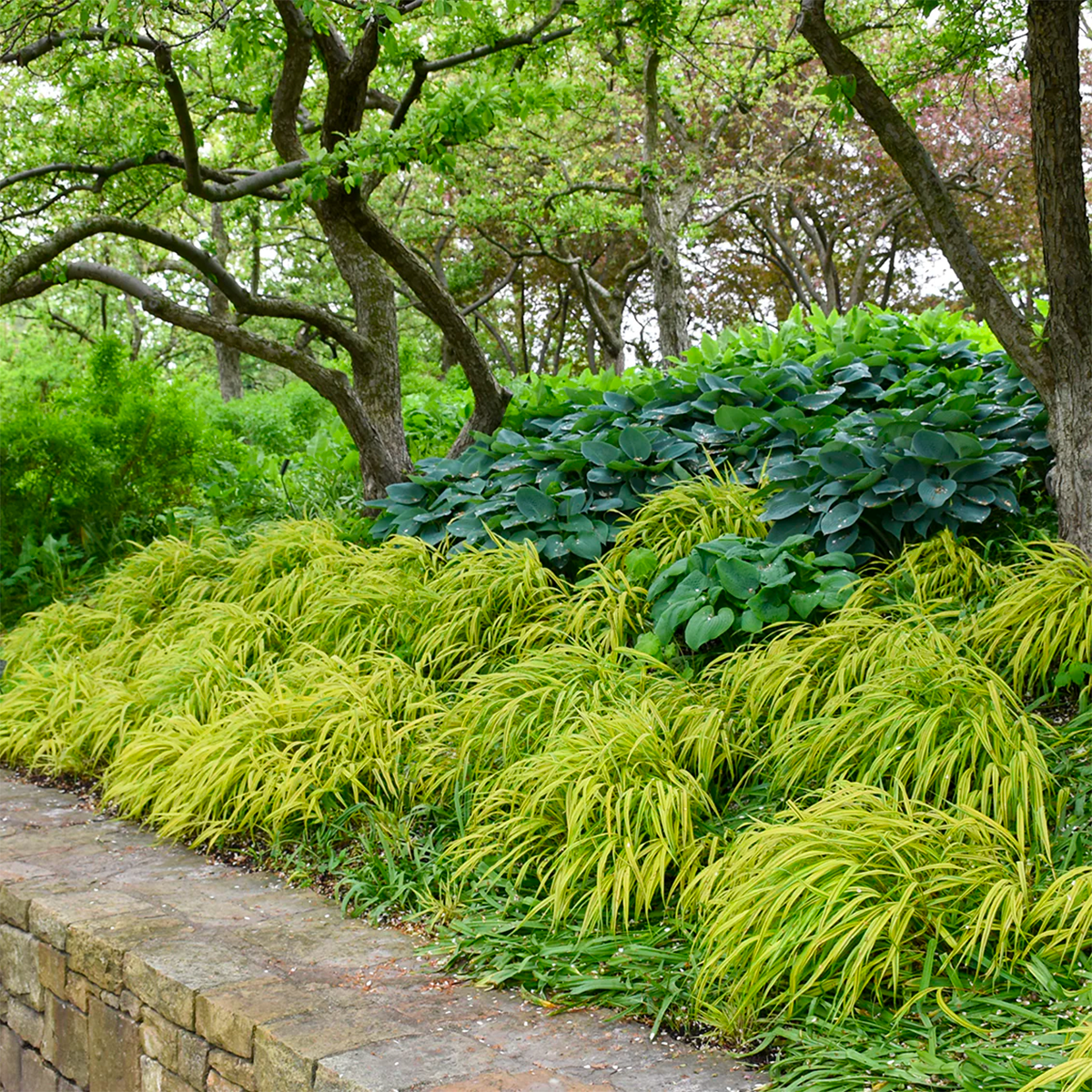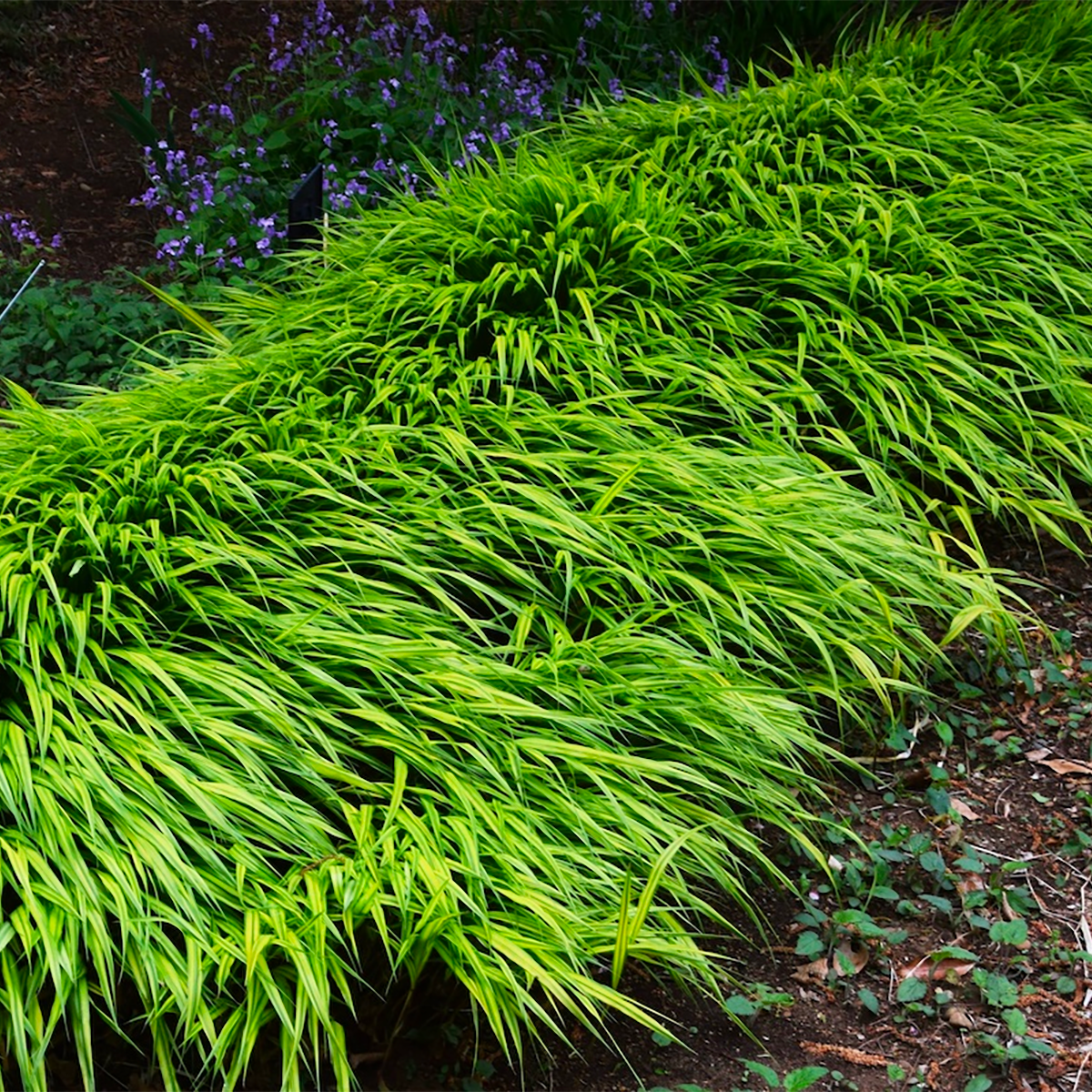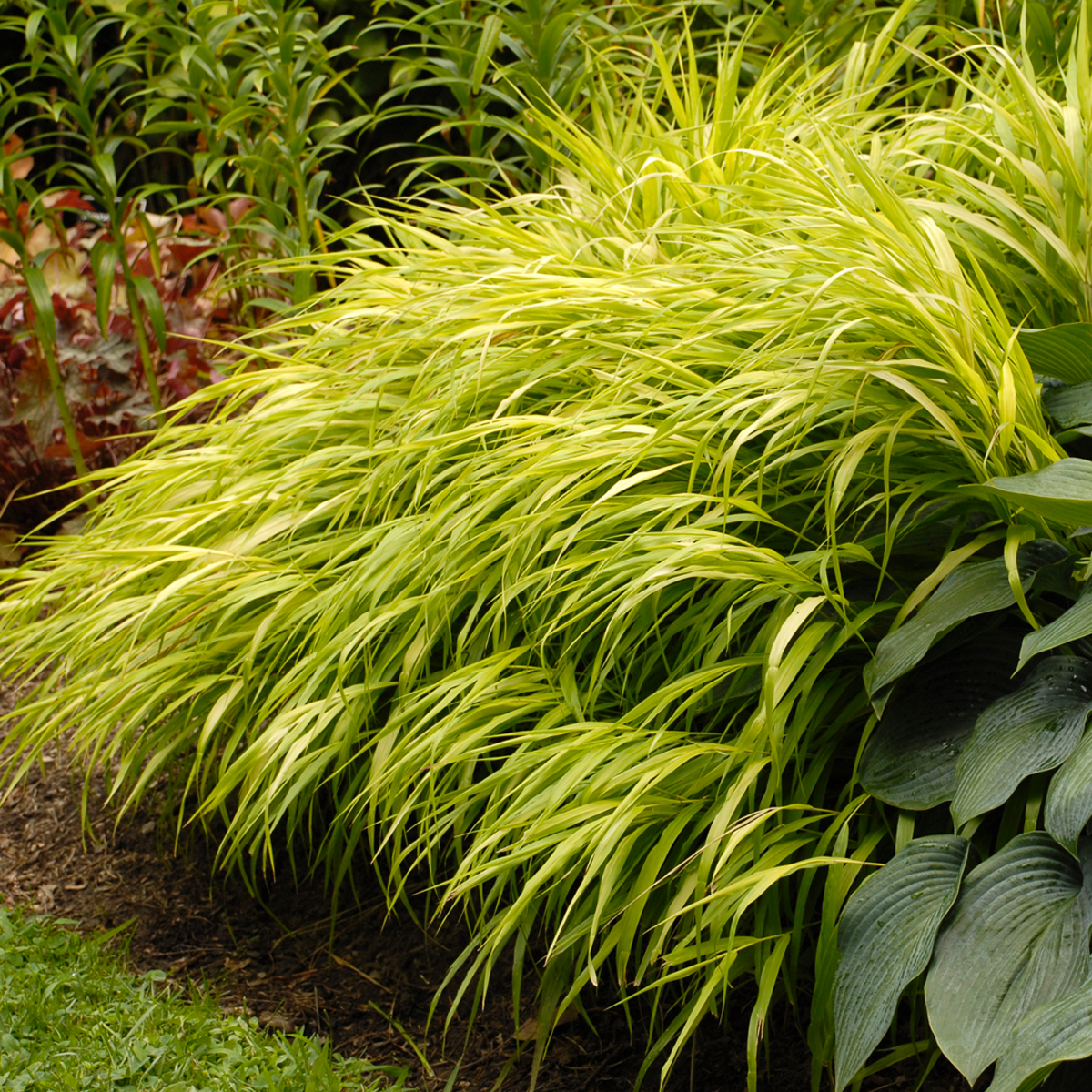Is a beautiful perennial ornamental grass—one of the rare grasses that thrive in shady conditions. It has arching, lance-shaped green or variegated leaves about 10 inches long that cascade in a neat mounding clump, up to 18 inches tall and 24 inches wide. Unlike many ornamental grasses, it is slow-growing and does not spread invasively.
Japanese Forest Grass Care: This is a low-maintenance plant that is not greatly troubled by pests or diseases. You can divide this perennial in spring, if desired, but, as a slow-growing plant, it doesn’t require division in order to remain healthy. There are virtually no serious pest or disease issues with Japanese forest grass.
Light: Japanese forest grass prefers partial shade, such as that found in woodland areas. In cooler climates, it can tolerate more sun, while in warmer regions it can tolerate near full shade. Part-shade conditions typically produce the brightest yellow in the leaf color; full shade may make the leaves more green than variegated, and full sun can scorch the leaf tips.
Soil: Japanese forest grass does well when planted in any moist, well-drained soil with a good amount of humus and other organic matter. Dense soils should be amended with compost or peat moss before planting.
Water: Japanese forest grass requires frequent watering and moist soil. This is not a plant for arid conditions, though established plants can tolerate short periods of drought without catastrophe. Most gardens find that the standard 1 inch, divided into two or three equal waterings per week, is ideal for this plant. A good amount of water-retentive organic material in the soil helps Japanese forest grass enjoy the moisture it requires.
Temperature and Humidity: Where Japanese forest grass is native, it thrives in cool, moist conditions. But if you give it shade, water it regularly, and keep its roots cool by mulching, it can do well in warmer areas. Extreme heat or cold may kill the plant. It is reliably hardy up to zone 5, but it can be quite successful in zone 4 if mulched in the winter.
Fertilizer




